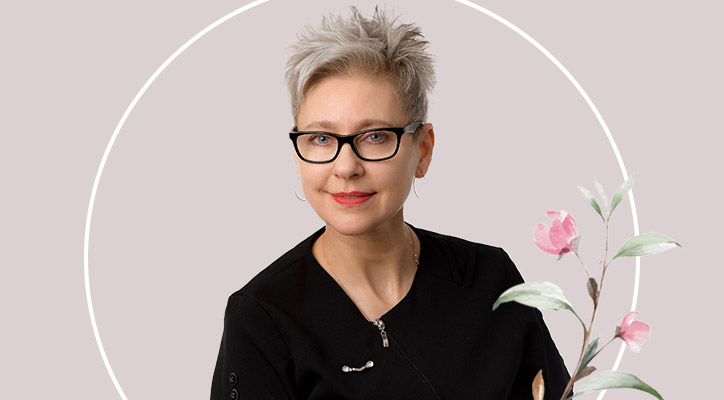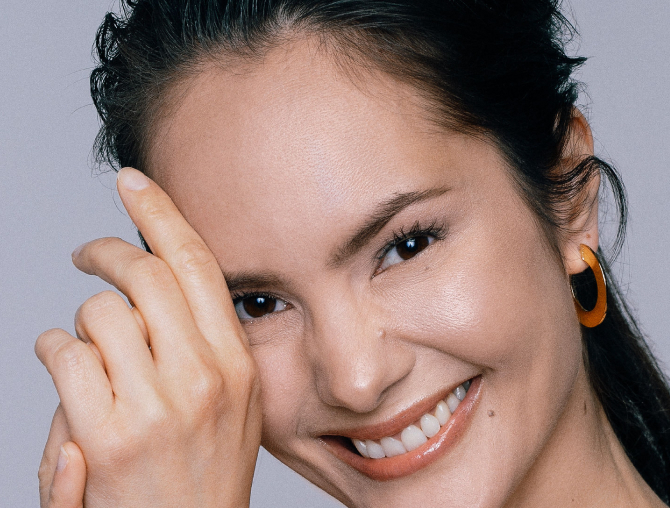Whether you get Botox or filler (or both!) regularly, or if you’re just venturing into the world of injectable treatments for the face, you might be wondering what the differences are between the two and which one will work best for your skin goals. It’s actually a really common question, and it’s a really good one—there’s still a lot of confusion out there. We’re all about our patients being fully informed about the treatment they’re choosing and what they can expect it to achieve for them.
Never shy away from asking your injector all the questions that you need about a treatment. There are no silly questions (and we’ve heard them all). The more informed you are about your treatment, the better position you’ll be in to choose the right one for yourself.
Botox and other neuromodulators
Botox is a neuromodulator. This means it’s a kind of messenger that affects the transmission of signals between neurons. Botox and its competitors – whether it be Dysport, Xeomin, or Nuceiva, are all based on a formulation of Botulinum Toxin A. Botox is actually a brand name of a specific formula of Botulinum Toxin A (Botox Cosmetic). In the last few years, many other competitors have brought other neurotoxins to the market. At our practice, we have experience with each of the big four neurotoxins and will work with you to decide which is best for you and your goals.
Neuromodulators like Botox work by temporarily blocking the communication between the nerves that control the contraction of the targeted muscles. In other words, Botox targets the underlying muscle activity in your face. It relaxes the muscles so that they contract less when you frown or squint, for instance.
So what does this translate to? Botox is primarily used to treat dynamic wrinkles, meaning those wrinkles that are caused by your facial expressions and muscle movement. We will most commonly inject Botox in the upper part of the face, like in the forehead to treat those frown lines, around the eyes to address “crow’s feet”, as well as the “bunny lines” (where the nose scrunches).

If we use Botox in the lower half of the face, it’s not really to treat wrinkles. In this case we’re using Botox for facial optimization—things like jaw slimming, to improve a gummy smile (where the upper lip lifts to reveal the gums when smiling), for softening or elongating the chin, or even to raise the tip of the nose. Botox can also be used in order to target the platysmal bands in the neck, smoothing out the neck’s appearance.
Botox typically lasts anywhere from 3-4 months, so we usually recommend that you repeat your treatment about every 3 months, just before it wears off entirely, in order to maintain your result. If you’re a long time Botox or other neurotoxin user, then you’ll know that eventually your muscles get ‘trained’ into contracting less allowing you to have longer intervals between treatments and/or require fewer units over time. Keep in mind that this isn’t always the case: some individuals have very strong facial muscles and many require more units as the aging process progresses, however if you start using Botox before many fine lines and wrinkles set in, you’re likely to experience a sweet spot where you need fewer units and less treatments to get your desired result.
Check out our guide on whether or not you should let Botox wear off completely to find out more.
Injectable Fillers for the Face
While Botox and other neuromodulators affect the muscles, fillers increase volume—they fill.
Fillers are basically injectable gels that help to improve volume loss and deep wrinkles most commonly in the lower half of the face. They are also used to add volume to enhance, augment or reshape facial features. They can be used in most areas of the face like the temples, the nasolabial folds (around the mouth), the lips, the tear trough area, in the cheekbones, jowls, and neck.

Some deep wrinkles in the glabellar region (the area of skin between the eyebrows and above the nose) can’t be treated with Botox alone and can be filled with filler instead. This is in fact a very advanced technique in a very high risk area. At MD Beauty Clinic only our doctors and surgeons perform filler in the glabellar region and the nose.
The most commonly used fillers are hyaluronic acid (HA) based fillers, and they come in a variety of consistencies from a number of different brands. Our recommendation usually depends on what part of the face we’re targeting. Some HA fillers are better for superficial lines and some are better suited to provide the face with a bit more lift or projection in areas like the chin, for instance. In other words, the filler we use under your eyes won’t be the same filler we use for your lips.
If you want to learn more about what we can do with lip filler in particular, read about the lip filler trends that are taking off now and how we achieve these looks.
We like using HA fillers because they’re quite versatile and they’re the only filler that can be dissolved with a substance called hyaluronidase in case you’re not happy with your result, or in the very rare occurrence you have an adverse reaction. HA fillers are eventually metabolized by your body and last anywhere between 6-12 months.
There are longer lasting fillers that are calcium hydroxyapatite (CaHA) based. These fillers are typically thicker and heavier when it comes to their viscosity and are mainly used to provide more structural support in areas like the cheeks and jawline. These fillers can last anywhere from 1-2 years.
Botox or filler: Which one do I need?
Whether you should get Botox or filler really just depends on your individual needs and also the result that you’re trying to achieve. You may be someone who is really only looking to target fine lines and wrinkles and does not need to restore volume loss, so in this case we would recommend Botox, Dysport or Xeomin.
If you’re looking to restore volume to an area of the face, add a little something extra to define a facial feature, or target skin laxity and add a little lift to your face, then we’ll probably recommend filler. That said, it’s totally common to have both treatments done together regularly. We’re all about approaching the face holistically, so we often find that combining both Botox and filler will give the right patient the most balanced and natural result.
But everyone’s different! What you need isn’t necessarily what someone else needs. If you’re still unsure about which treatment is best for you, we’re always here to chat with you about it. Our consultations are complimentary. We’d love to chat with you about your questions and goals.







